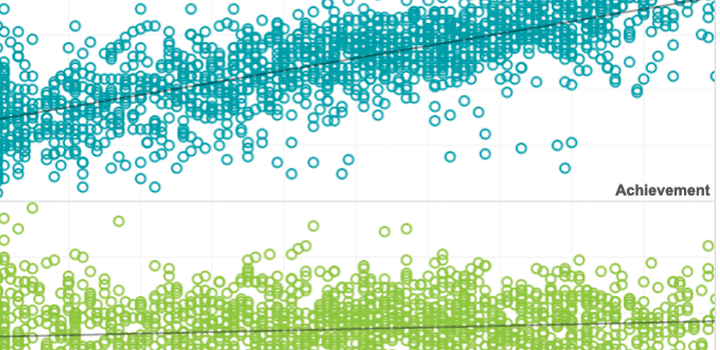Journal article
Using test scores for teacher evaluation: Why caution is necessary
2013
TASA INSIGHT Magazine, 28(1), 15–17.

Abstract
This article offers insight and guidance on issues to think about before tests are used as an evaluation tool and to help ensure better choices are made about the role test scores play in a teacher’s evaluation.
This article was published outside of NWEA. The full text can be found at the link above.
Related Topics


Moving from data to making a difference
The problems faced within education resemble the problems in many social settings in that they lack clear definitions, have many potential causes, lack simple solutions, and defy straightforward measurement. In this article, Andrew Hegedus shares a view on the types of problems faced in education and outlines key characteristics of a process that begins with collecting data and ends with evaluating progress.
By: Andrew Hegedus
Topics: Empowering educators, High school, High-growth schools & practices


An investigation of examinee test-taking effort on a large-scale assessment
Most previous research involving the study of response times has been conducted using locally developed instruments. The purpose of the current study was to examine the amount of rapid-guessing behavior within a commercially available, low-stakes instrument.
By: Steven Wise, J. Carl Setzer, Jill R. van den Heuvel, Guangming Ling
Topics: Measurement & scaling, School & test engagement, Student growth & accountability policies


Developing more meaningful definitions of college readiness
Complementing traditional quantitative measures with more qualitative tools can help determine college and career readiness.
By: John Cronin, Michael Dahlin


The potential of adaptive assessment
In this article, the authors explain how CAT provides a more precise, accurate picture of the achievement levels of both low-achieving and high-achieving students by adjusting questions as the testing goes along. The immediate, informative test results enable teachers to differentiate instruction to meet individual students’ current academic needs.
By: Edward Freeman
Topics: Innovations in reporting & assessment, Measurement & scaling, Student growth & accountability policies


Making teacher goal setting more powerful
Most of us believe that when individuals have goals, their performance improves, and this belief is being put to the test in schools today. In an effort to create alignment between district and school improvement efforts, teachers are more likely than ever to have formal performance goals.
By: Andrew Hegedus
Topics: Empowering educators, High-growth schools & practices


Modeling student growth has been a federal policy requirement under No Child Left Behind (NCLB). In addition to tracking student growth, the latest Race To The Top (RTTP) federal education policy stipulates the evaluation of teacher effectiveness from the perspective of added value that teachers contribute to student learning and growth. Student growth modeling and teacher value-added modeling are complex.
Topics: Growth modeling, Measurement & scaling, Student growth & accountability policies


Of particular debate is the impact of transferring from a traditional public school to a charter school on student achievement and growth. We employ propensity score stratification and multilevel models to balance key covariates between treatment and control groups of a cross-state sample of students, which provides a more complex picture of charter school achievement effects in a quasi-experimental context.
By: Beth Tarasawa, Yun Xiang
Topics: Measurement & scaling, Student growth & accountability policies


